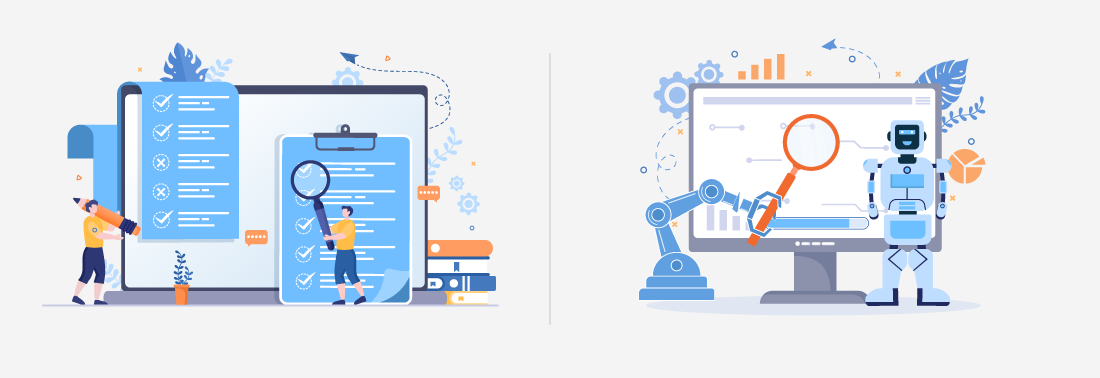Manual Testing vs. Automation Testing: When to Use Which Method
jun 08, 2023 | 42Gears Team
Manual testing and automation testing are two essential methods of software testing. While manual testing involves executing test cases manually, automation testing involves the use of automated tools to execute test cases. Although both methods are valuable, choosing which one to use depends on several factors.
According to a recent report, automation testing is projected to grow at a rate of 15% CAGR between 2023 to 2032.
In this article, we will explore the differences between manual testing and automation testing, when to use each method, and how 42Gears AstroFarm is a secure and robust platform for automation testing.
Manual Testing:
Manual testing is the process of executing test cases manually to identify defects in the software. It involves the use of human skills and judgment to validate the software's functionality, user interface, and usability. Manual testing is suitable for testing small applications or features that do not require frequent changes. Manual testing is also useful when testing the software for the first time or when testing new features that have not been automated yet.
Manual testing is also effective in situations where the test cases require human skills and intuition to evaluate the software. For example, exploratory testing, which involves ad-hoc testing to identify potential issues, is best performed manually. Similarly, usability testing, which involves evaluating the software's ease of use and user interface, is also best performed manually. In both cases, manual testing allows for a more comprehensive and accurate evaluation of the software.
Automation Testing:
Automation testing involves using software tools to execute test cases automatically. The software tools are programmed to simulate user interactions, validate software functionality, and identify defects. An example of a platform that offers automation testing is 42Gears AstroFarm. Automation testing is suitable for testing large and complex applications that require frequent testing. It is also useful for regression testing, where the same test cases are executed repeatedly to ensure that new changes to the software have not introduced defects.
Automation testing is more efficient than manual testing as it can execute a large number of test cases in a shorter time. Automation testing also eliminates the human error factor that can occur during manual testing. However, automation testing can be expensive to set up, and maintaining the automation framework can be challenging.
When to Use Which Method:
Determining whether to opt for manual or automation testing is dependent on multiple factors, as listed below:
- Type of software being tested: The type of software being tested must be taken into consideration. For minor applications or features, manual testing might suffice. However, for extensive and intricate applications, automation testing is more efficient and productive.
- Frequency of testing: The frequency of testing is another crucial factor to consider. Automation testing is usually better for software that needs frequent testing as it is capable of executing identical test cases repeatedly, which manual testing cannot practically achieve.
- Availability of resources: The availability of resources is an essential factor to weigh in. Automation testing necessitates more resources for establishing and maintaining the automation framework. When resources are limited, manual testing might be the only feasible alternative.
- Type of testing: The type of testing required is another significant aspect to consider. Exploratory testing, usability testing, and acceptance testing are best performed manually as they require human skills and intuition. On the contrary, functional testing, regression testing, and performance testing are best carried out using automation testing.
Manual testing and automation testing are both valuable methods of software testing. Choosing between the two depends on several factors, including the type of software being tested, the frequency of testing, the availability of resources, and the type of testing required. In general, manual testing is suitable for small applications or features that do not require frequent changes, while automation testing, through platforms like AstroFarm, is suitable for large and complex applications that require frequent testing. However, both methods can be used in combination to achieve the best results.
Create your own private device farm.
Subscribe for our free newsletter








